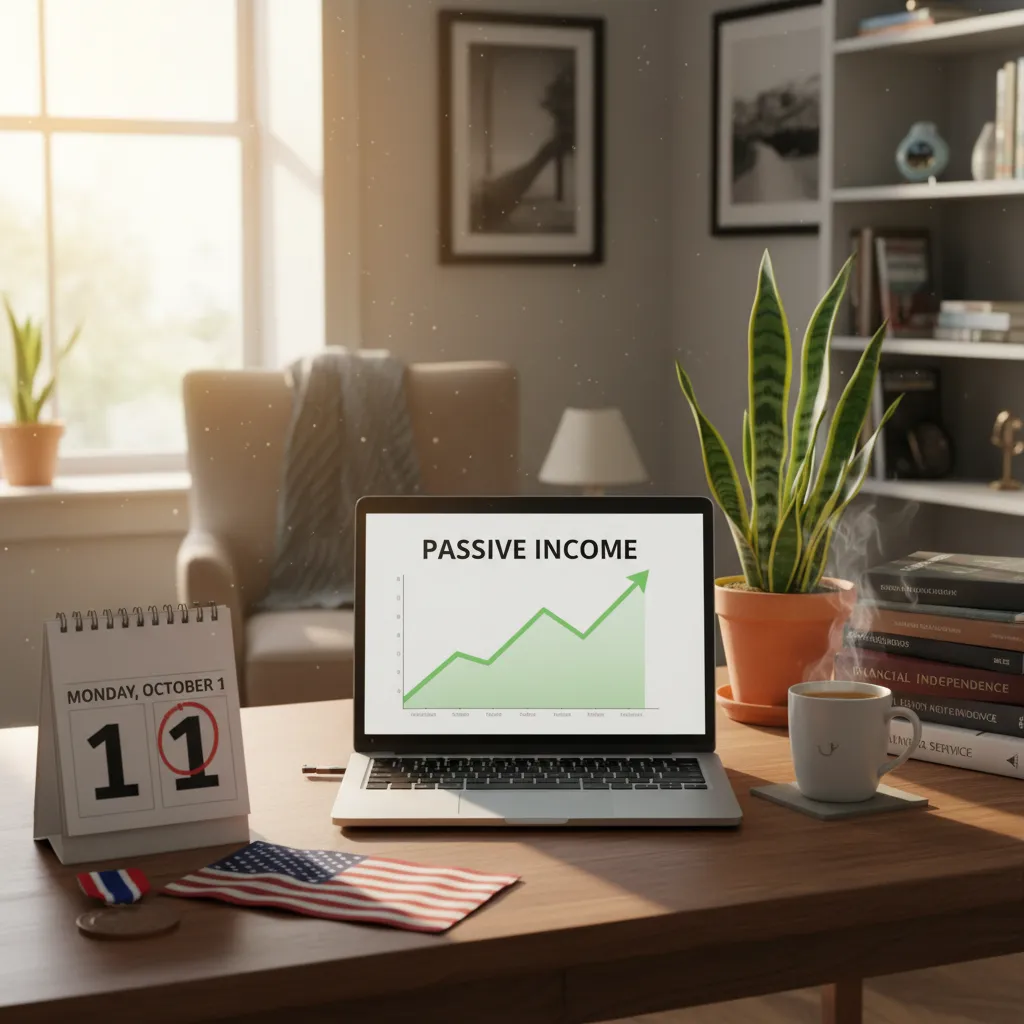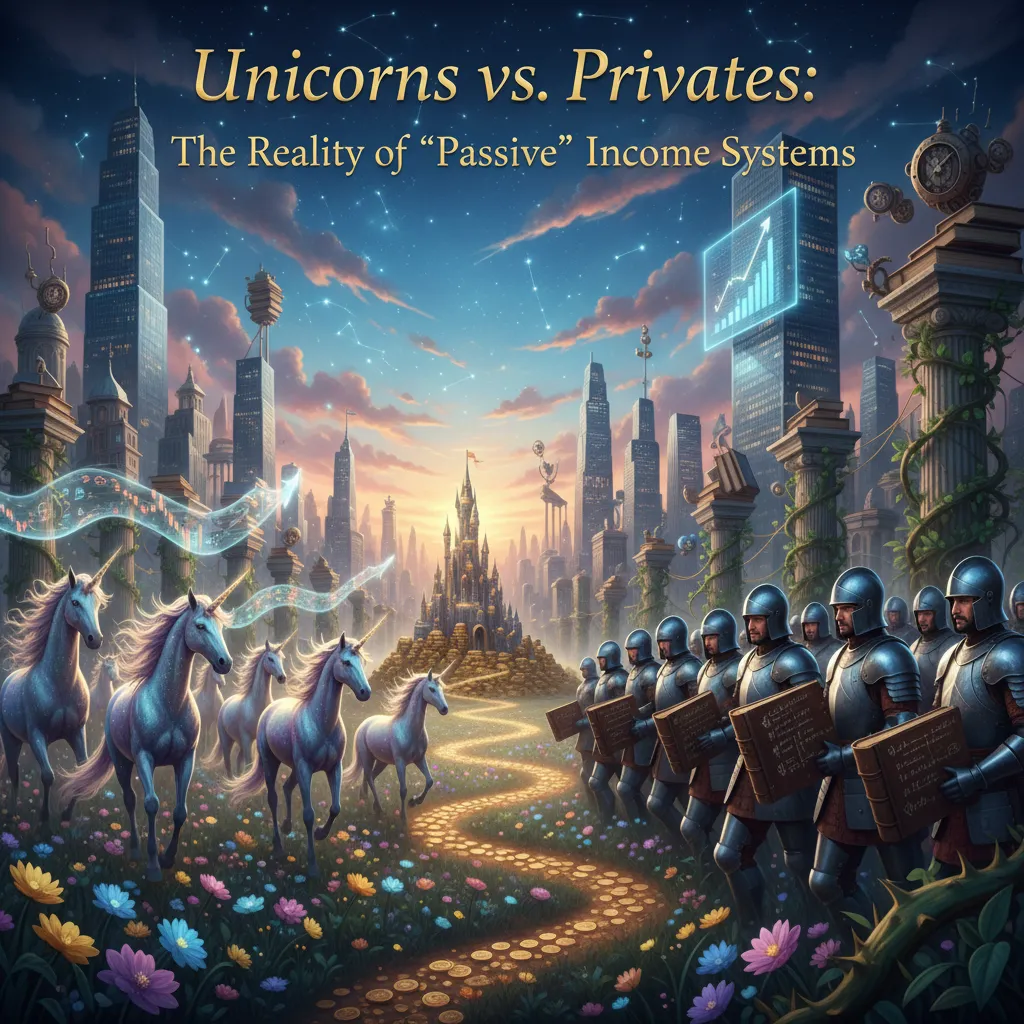There’s nothing quite like that pit-in-your-stomach moment when you realize payday is still a day away and your bank account’s looking like the bottom of an MRE pouch. As a veteran who’s had my fair share of surprise financial scrambles, passive income has always felt like a personal life raft—especially knowing I don’t have to be a tech wizard or social media celebrity. Today, I’ll share the unfiltered story of how I stumbled, learned, and eventually set up an online business that churns out income even when life gets messier than a barracks floor after Taco Tuesday.
1. The Payday Panic: Why Passive Income Matters More for Veterans (and Anyone Fed Up with the Hustle)
There’s a certain kind of anxiety that comes from staring at your bank account the night before payday, wondering if you’ll make it through. I’ve been there—especially during my Army days, when a surprise $17 deduction from DFAS in 2017 left me scrambling. For veterans and active-duty service members, this isn’t just a rare event; it’s a recurring theme. Pay disruptions, government shutdowns, and sudden expenses are part of the job description. That’s why Passive Income Generation isn’t just a buzzword—it’s a lifeline.
But here’s the truth: more money isn’t the only goal. What I really crave is predictability, freedom, and peace of mind. Financial freedom means less stress, not just a bigger paycheck. It’s about knowing that, even if the VA or DFAS throws a wrench in my plans, my automated online business is still working in the background. That’s the real power of Veteran Entrepreneurship—building a system that keeps going, no matter what chaos life or the military throws at me.
Military routines are famous for their structure, but every service member knows that chaos is always lurking. One minute, everything’s by the book; the next, you’re improvising because the plan changed (again). Chasing side income online can feel the same—one algorithm update or policy change, and you’re back to square one. That’s why the appeal of Passive Income Ideas is so strong: income that keeps coming, even when I’m traveling, PCSing, or just dealing with the unexpected.
What most people don’t realize is that veterans are uniquely equipped for this. We’re trained to turn chaos into order, adapt quickly, and follow systems—skills that translate perfectly to building an automated business. Our “BS detector” is sharp, and we know how to spot what works. As I like to say,
"Passive income isn’t about laziness; it’s about reclaiming control when everything else is chaos."
Let’s bust a myth: passive income isn’t “set it and forget it.” It’s more like training a new private—you guide, drill, and supervise until it can run solo. The real win is when your system works without constant oversight, giving you back your time and sanity. For veterans, that means more family dinners, less financial stress, and the kind of Financial Freedom that lets you breathe easy—even when life gets messy.

2. Unicorns vs. Privates: The Reality of ‘Passive’ Income Systems
Let’s get real about Passive Income Generation—it’s not a magical unicorn that drops cash into your account while you nap. I used to believe in that fantasy, too. But after years of chasing “hands-off” money, I learned the hard way: passive income is more like mentoring a new private than stumbling onto a pot of gold. As I like to say,
“Managing a passive income stream is a lot like supervising a squad—hands-on at first, then slowly stepping back.”
When I started building my Automated Online Business, I thought automation would mean zero effort. The truth? It’s more like onboarding a recruit. You have to set up the system, train it, and supervise it before it can run with minimal oversight. In the early days, I spent hours tweaking my funnel, checking analytics, and making sure my emails didn’t end up in spam. Only after that groundwork could I trust the system to handle things on its own.
Here’s what a real Business Process Automation looks like:
- Setup: Choose one product, build a simple funnel, and connect your automation tools.
- Training: Test every step, monitor results, and fix what’s broken—just like drilling a new private on the basics.
- Supervision: Check in regularly, optimize, and troubleshoot. Even the best systems need a leader to step in when things go sideways.
- Gradual Detachment: As the system proves itself, you step back—checking in weekly instead of daily.
Why do so many “get rich quick” folks flame out? They chase unicorns—complex tools, zero oversight, and the promise of instant money. I made that mistake myself with a dropshipping store. I set it up, turned on the ads, and waited for the cash to roll in. Instead, I got customer complaints, payment processor headaches, and a pile of unsold inventory. That failure taught me: automation only saves time once the process is well designed and running smoothly.
For beginners, the best move is to start simple. Pick repetitive, manageable tasks to automate. Don’t get distracted by shiny, complicated tools or try to “learn everything first.” Even the simplest system requires check-ins and tweaks. Passive income isn’t about doing nothing—it’s about building something that, with the right setup and attention, eventually works harder than you do.
3. The Three-Step Blueprint (Really—Just Three Steps): Building Your Automated Online Business
Let’s get real—building an Automated Online Business doesn’t require a PhD, a massive following, or endless hours glued to your laptop. As someone who’s stared down an empty bank account and wondered how to make ends meet, I know the power of a simple, step-by-step guide. Here’s the exact three-step blueprint I used to create my own AI-Powered Income stream—no fluff, no fancy hacks, just what works.
Step 1: Pick One Digital Product (and Only One)
Forget the urge to juggle ten things at once. The fastest way to fail is to launch with too many products. I started by picking just one digital product—a mini-course, a template, an affiliate offer, or a simple guide. This single focus is your mission objective. Trying to do more is like clearing a room from every entry at once: chaos. Start with one, master it, and expand later.
Step 2: Build One Simple Sales Funnel
This is where most people overcomplicate things. My first funnel was basic: a landing page, an email follow-up, and the offer. That’s it. No endless upsells, no complicated tech. I treated my first digital funnel like basic training—minimal gear, clear orders, and zero room for ‘shiny object’ distractions.
- Landing Page: Clear headline, obvious call-to-action.
- Email Follow-Up: Automated, value-driven, and straight to the point.
- Offer: Make it easy to buy. Add more offers only after the first is proven.
This simple funnel shields you from headaches—algorithm changes, platform drama, and policy shifts. Less is more.
Step 3: Let AI Do the Heavy Lifting
Here’s where Sales Funnel Automation and AI-powered tools become your secret weapon. I use AI to:
- Create content and schedule posts
- Write and send emails
- Optimize funnels and track results
- Handle customer support and nurture leads
AI never takes a day off, never complains, and never eats my snacks. It’s like having a digital platoon working 24/7. I just feed it the right inputs, and it keeps my system running—no matter what chaos life throws my way.
"I treated my first digital funnel like basic training—minimal gear, clear orders, and zero room for ‘shiny object’ distractions."
Just like in basic training, the key is focus, repetition, and learning by doing—not by researching forever. The simpler your system, the more resilient it is to outside disruptions, whether it’s Meta, Google, or the next policy update. This is the foundation for real, reliable AI-Powered Income.

4. AI: Your Relentless Digital Platoon (and Secret to 24/7 Growth)
If you’ve ever wished you had a squad of tireless soldiers working for you around the clock, AI-powered income tools are the closest thing you’ll find online. I like to think of AI as the private who never calls in sick, never asks for a break, and definitely never raids your snacks. “Once I realized AI didn’t care if I was at the range, sleeping, or on leave, things changed overnight.” Suddenly, my automated online business could keep growing—even when I was off the grid.
Here’s the real magic: AI and automation tools transform a one-person operation into a full digital platoon. I started out skeptical, but once I saw AI handle the grunt work, I was hooked. Imagine this: while I’m spending time with family or catching up on sleep, AI is writing blog posts, scheduling social media, researching keywords, and even optimizing my sales funnel. Tools like Zapier connect all my apps so leads flow smoothly, Shopify manages my digital storefront, and AutoDS automates product listings and order fulfillment. Even the ultra-boring stuff—like reviewing Meta’s Spam Policy or Google/YouTube Posting Guidelines—gets easier when AI flags issues before they become problems.
- Content Creation: AI drafts emails, blog posts, and landing pages in minutes.
- Scheduling & Posting: Automated tools post content across platforms, day or night.
- Research & Optimization: Algorithms track trends, suggest keywords, and refine my funnels.
- Lead Nurturing: AI chatbots and automated email sequences engage leads without me lifting a finger.
- Customer Support: Bots answer FAQs, process refunds, and keep customers happy 24/7.
I learned quickly that trusting the system is key. Following automation platform rules—like Meta’s Spam Policy (2024) and Google/YouTube Posting Guidelines (2024)—keeps accounts safe and the business running smoothly. The unexpected upside? Less burnout, more time for family, and real peace of mind. Instead of drowning in busywork, I focus on strategy and growth. My AI-powered income system doesn’t just work hard; it works smart, freeing me from the anxiety of constant hustle.
With AI as my relentless assistant, I finally experienced what business automation is supposed to feel like: steady, reliable, and always on duty. For any veteran ready to build an automated online business, AI is the secret weapon that turns solo effort into a force multiplier—no experience required.
5. Surprise Superpowers: Why Veterans and Complete Beginners Often Win at This Game
Here’s something I never expected when I started my own automated online business: the people who win most often aren’t the tech geniuses or the marketing “gurus.” It’s veterans and total beginners—folks like me, who walked in with either a military background or absolutely zero online experience. If you’re looking for a Beginner’s Guide to Veteran Entrepreneurship, you’ll find that our unique skills are actually secret weapons.
Veterans have a real edge. We’re trained to follow structure, adapt on the fly, and sniff out shortcuts when things get tough. I can’t count how many times I’ve had to improvise during a field exercise or deployment—those same instincts help me navigate the world of online automation. We’re also experts at spotting BS, thanks to years of briefings and “mandatory fun” PowerPoints. That means we don’t fall for overhyped tactics or shiny distractions. We want Best Practices and a Step-by-Step Guide—and that’s exactly what works best in building passive income systems.
But here’s the wildest part: having zero tech skills is often an advantage. “Ironically, being clueless is sometimes your greatest advantage.” When you’re brand new, you don’t have to unlearn bad habits or overcomplicate things. You just follow the blueprint—one product, one funnel, one AI-powered system. I’ve seen privates, retirees, spouses, even military kids succeed because they simply did what the system told them, step by step. No ego, no shortcuts, just action.
I learned this lesson the hard way. The first time I tried to build an online business, I over-planned everything. I mapped out every possible scenario, tried to master every tool, and ended up stuck in analysis paralysis. It reminded me of my first field exercise—spending hours prepping, only to realize the real learning happened when I just got out there and did it. The same is true here: structured learning and following proven systems yield consistent results, especially for beginners and veterans.
What’s truly inspiring is seeing people from all walks of life—combat vets, single moms, National Guard soldiers, and total civilians—succeed simply by sticking to the process. They didn’t need internet fame or a massive audience. They just needed a reliable system and the willingness to take the first step. Overthinking blocks action, but action leads to learning and results. That’s the real superpower veterans and beginners bring to the table.

6. Landmines and Rookie Mistakes: The Pitfalls You’re (Probably) Going to Hit (and How to Dodge Them)
If there’s one thing military life teaches you, it’s that the plan never survives first contact. The same goes for building an automated online business. I’ve hit almost every landmine in the field of business automation, and if you’re like me, you’ll probably step on a few too. But here’s the good news: every mistake is a lesson—so long as you learn (and fix it before payday).
Why ‘Learning Everything Before Starting’ Is a Trap
This was my first big rookie mistake. I thought I needed to master every tool, every workflow, and every AI hack before launching. Truth is, that’s just another way to procrastinate. You don’t need a PhD in automation to get started. In fact, the best practice is to learn by doing. I remind myself: I didn’t know how to clear a room until I actually did it. The same applies here—get your hands dirty, then improve as you go.
Beware ‘Tool-itis’: The Fancy Feature Rabbit Hole
It’s easy to get distracted by shiny new apps and endless integrations. I call this tool-itis. I once spent weeks connecting fancy platforms, only to realize my system was so complicated, I couldn’t even troubleshoot it. Common mistake: choosing complex over practical tools. The best automated workflows are simple and reliable. If you can’t explain your system to a fellow vet in five minutes, it’s too complicated.
When Automation Breaks: Treat It Like an AAR, Not a Court-Martial
Automated systems will break—count on it. The trick is to treat every breakdown like an after-action review (AAR), not a disaster. Ask: What failed? Why? How do I fix it and prevent it next time? My most embarrassing tech meltdown? I tried to automate everything at once, and the whole funnel crashed. What finally fixed it? Stripping it back to basics and building up one step at a time. Simpler was better.
Regular Spot Checks: Your Secret Weapon
Neglecting workflow monitoring is the most frequent mistake I see. Skipping regular checks is like skipping spot checks before formation—eventually, you’ll pay for it. Set a reminder to review your automations weekly. Test your funnel, check your integrations, and have a backup plan. If something breaks, you’ll catch it before it costs you money (or your sanity).
"The only bad mistake is the one you don’t learn from (or fix before payday)."
Remember, business automation isn’t about perfection—it’s about steady improvement. Dodge the landmines, keep it simple, and always run your AARs. That’s how you build a system that works for you, not against you.
7. Why It’s About More Than Money: The (Unexpected) True Win of Automation
When I first started chasing passive income ideas and building my automated online business, I’ll admit—my main goal was financial freedom. Like most veterans, I wanted to escape the stress of living paycheck to paycheck, always wondering if the next unexpected expense would knock me off balance. But after setting up my first AI-powered system, I realized something surprising: the real win wasn’t just the money. It was the stability, the peace of mind, and the time management tips I’d unknowingly built into my life.
Predictable income does more than pad your bank account. It gives you options. Suddenly, I wasn’t scrambling for odd jobs or worrying about whether I could take my daughter to her soccer game. I could breathe easier, knowing my system was working in the background—selling, nurturing leads, and handling customer questions—while I focused on what mattered most. As I often say,
“Freedom isn’t just a bigger bank account—it’s the ability to finally put your phone down and actually talk to your family.”
That’s the unexpected true win of automation: it turns the scattershot hustle of side gigs into calm predictability. My days stopped being dictated by financial anxiety. Instead, I found myself with more time and energy for the things I’d put off for years—catching up with friends, volunteering, or even just binge-watching Netflix without guilt. Automation gave me my life (and my brain) back. Whether you use that time to rest, travel, or simply enjoy breakfast without checking your bank balance, the value is priceless.
One morning stands out: I was sipping coffee, watching the sunrise, and for the first time in years, I actually enjoyed my breakfast. My phone buzzed—a notification that my system had made another sale while I slept. That moment captured the heart of what an automated online business can do for veterans: it offers not just financial freedom, but the confidence and calm that come from knowing you’re covered, no matter what life throws your way.
In the end, automation is about reclaiming your time, reducing stress, and opening up new possibilities. It’s about living boldly, breathing easier, and finally having the space to connect with the people and passions that matter most. For me, that’s the true victory—and it’s a mission every veteran deserves to experience.
TL;DR: Building automated online income isn’t about being a genius or an early adopter—it’s about picking one simple system, putting it to work (with help from AI), and letting compounding effort buy back your freedom. Even if you’re starting flat-footed, you’ve already got what it takes.



